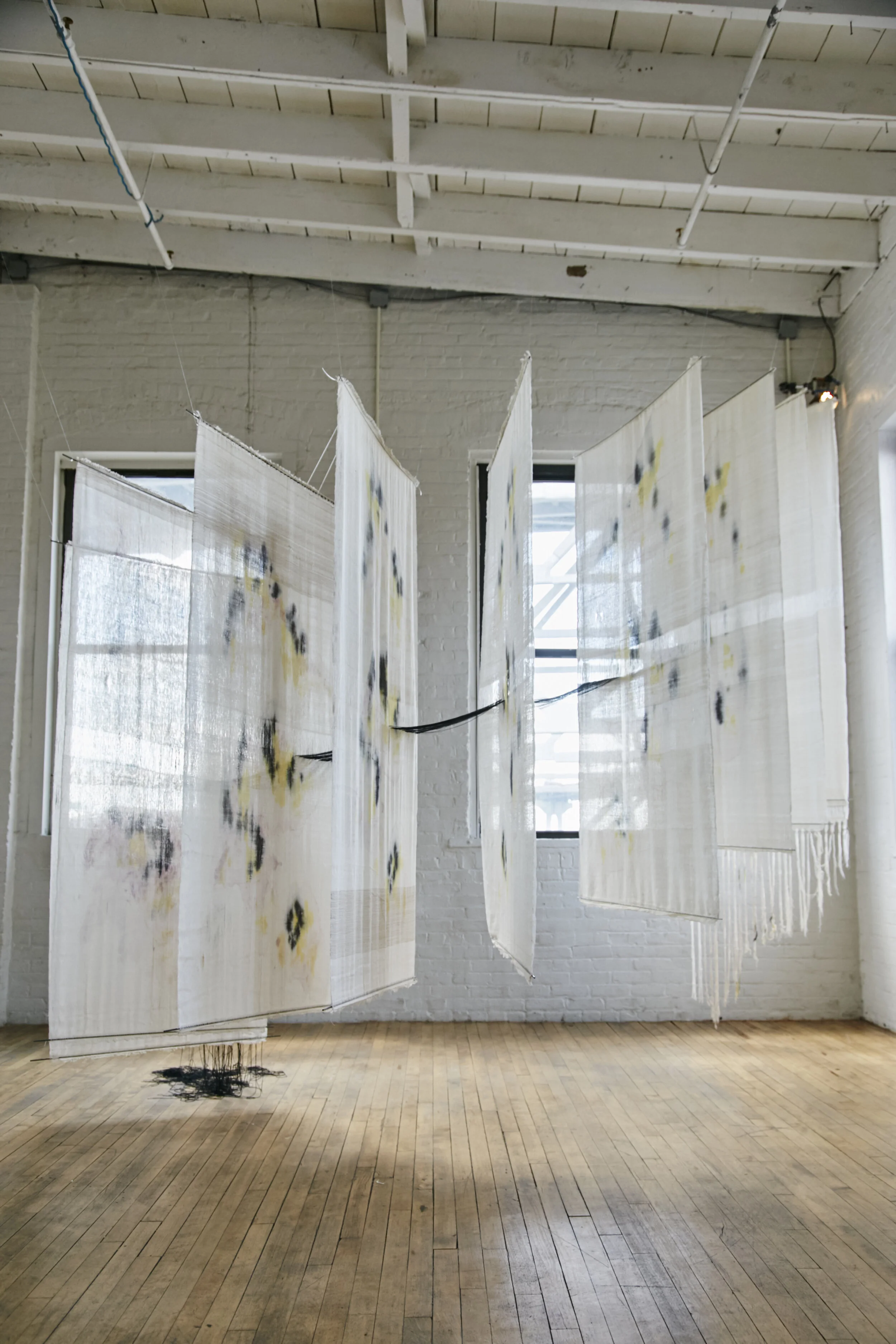
Textile Installations
Victoria Manganiello
Volume Two, Issue One, “Inhale/Exhale,” Visual Art
The objects I compose are studies of materials and our fundamental relationship to them. I use traditional textile-based media: I spin my own yarn, mix my own color dyes (natural and synthetic) and weave my own constructions. My recent projects incorporate materials from the seemingly extreme natural to the extreme synthetic and I make choices with density, color, and kinetics to demonstrate that binaries are impossible. I use abstraction, which I derive from world geography and statistical mapping and my work takes the form of sculptural installation, wall hanging, performance, and social practice. I am interested in using weaving as code and language. Conceptually, my work is rooted in the history of technology, borders and the limits those things must reconcile. I use the stories of the past with the mood of the present to create experiential artworks that speculate on the future.
Our relationship with textiles is innately intimate and while different cultures have ascribed varying meanings to their textiles, the essence of the experience is the same no matter who you are. Cloth is an incredible equalizer and is perhaps the one thing that we all share. But the unique equality of cloth is no longer so unique. Our relationship with technology has recently become dominant in this equalizing function. Whether it be the dislocation within society, or the empowerment of disconnected communities, the varying ways in which we interact with technologies (both for good and for bad) are being questioned now more than ever before. Perhaps understanding the history of these technologies can help us consider technologies for the future.
Exploring the intersections between materiality, space, philosophy, and storytelling, my installation work, abstract paintings, and performances are made with hand-woven textiles using hand-spun yarn and hand-mixed natural and synthetic color dyes. These labor-intensive and monotonous processes subliminally act as connectors to all the cultures on the map, current, and past that have, uniquely, yet simultaneously developed textile techniques across space yet I am using them to make abstract contemporary art.
By utilizing the genre of installation, these artworks create a space for viewers to find themselves within- between locations- questioning the relationship between where both they and we came from, where they are going and where we belong. Knowledge of the future is never provided at the start, yet we can understand that there is a direction to our histories.
Some of Manganiello’s installation pieces resist being fixed to gallery walls and instead are suspended from the ceiling. Many pieces are even woven together, thus inspiring the viewer to contemplate the spaces in between the panes of fabric. Meanwhile, bright yellow or black threads tether one pane to another. The lengthwise weft threads act as delicate tethers connecting the brightly painted fabrics which appear suspended in mid-air. The bold threads guide the viewer from one pane to the next as they also call attention to the spaces in between panels which, like air itself, is not empty.
Other works may be neatly framed, but they have no fixed focal point. They instead invite the viewer to look through and beyond the fabric itself. In these works, the blurring of bright colors creates unpredictable patterns that are accented by spaces in which the weft threads have been removed, leaving room for the gaze to travel beyond the fibers and back again, like breath. There is a kind of intimacy in this gaze; it is gentle, like a soft inhale and exhale.
The eye’s movement through and between the panels and the fibers is enhanced by the vertiginous changes in color in many of her pieces. From black to gold, rose petals to chartreuse, the colors are both natural and synthetic. Coupled with her attention to the bleeding of colors through the fabric dying process, Manganiello’s works render the ephemerality of space and air not only visible but tactile, as seen in Untitled 53.
- Sara Gabler Thomas








